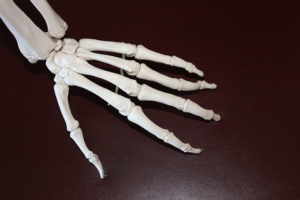A Guide to Arthritis: How To Manage Pain by Body Part – Yale Medicine
How it happens: The hip is a ball-and-socket joint that is padded and protected by smooth cartilage during movement. When that cartilage breaks down due to overuse, aging, stress on the body from obesity, and/or any number of other factors, bone rubs against bone, causing pain and other symptoms. It’s a common area for OA to develop. And, while RA usually starts in the smaller joints, it can show up in the hip as well.
“The hip really drives the boat,” says Dr. Gibson, who sp…….
How it happens: The hip is a ball-and-socket joint that is padded and protected by smooth cartilage during movement. When that cartilage breaks down due to overuse, aging, stress on the body from obesity, and/or any number of other factors, bone rubs against bone, causing pain and other symptoms. It’s a common area for OA to develop. And, while RA usually starts in the smaller joints, it can show up in the hip as well.
“The hip really drives the boat,” says Dr. Gibson, who specializes in both hip and knee disorders. “If the hip isn’t working, the feet and ankles are under stress, and it becomes harder to move your knee. A person may notice a ’locking’ noise with movement, decreased range of motion, a limp, and/or pain in the groin that can move down the leg and up into the back. You might eventually start to walk with an altered gait.”
Self-care: Start an exercise program (or change the one you have to avoid high-impact sports, such as running or tennis), maintain a healthy diet, and lose weight, if needed.
Dr. Gibson suggests trying “a gentle cyclic loading program,” like walking or low-impact aerobics. These types of activities have been shown to be protective of joints. Talk to your doctor about taking an over-the-counter pain reliever, such as a non-steroidal anti-inflammatory drug (NSAID), but remember that these are intended for short-term use.
How a specialist can help: Consult a professional when your hip arthritis limits daily function or regular activities, Dr. Gibson says.
A specialist will start with noninvasive treatments, including physical therapy and oral medications. If these simple treatments don’t work, more invasive treatments, like corticosteroid hip injections, can minimize symptoms and preserve function. One caveat is that injections are “a double-edged sword” in that they relieve inflammation and provide acute pain relief, but they can be toxic to the areas where they are administered, Dr. Gibson says. “So, you don’t want to do too many—maybe two or three at most in a given year.”
If you’re considering surgery: Hip replacement is considered one of the most successful operations in orthopaedics, explains Dr. Gibson. It’s minimally invasive and can be done as an outpatient surgery in many cases. “It’s really a dramatic, transformative operation—someone who was sedentary can get to a place where they can do pretty much everything again,” he says.
Replacement hips use implants—made of a combination of metal, plastic, and ceramic—that last decades. One operation, called the direct anterior approach, avoids cutting through muscle to replace a hip, and surgeons say that leads to easier rehabilitation.
Whatever approach a patient chooses, the …….
Source: https://www.yalemedicine.org/news/arthritis-treatments







